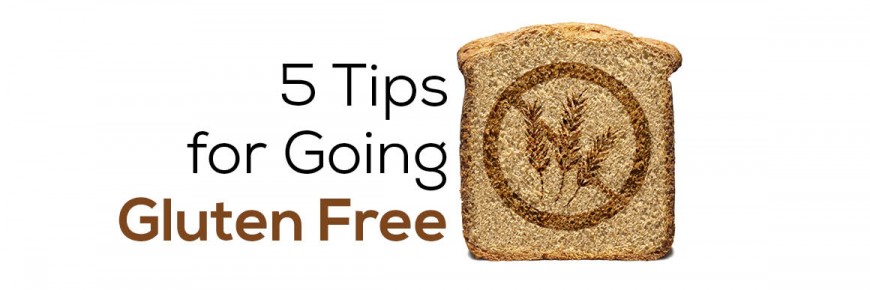5 Tips for Going Gluten-Free

1. Clean out your fridge and cupboards. Don’t tempt yourself by having gluten-containing foods in plain sight. Remove the foods you won’t be eating and then fill your kitchen with nourishing foods you can eat. Make sure to check for ingredient on products that may have hidden gluten like we discussed on the previous post, and substitute those too.
2. Plan your meals and snacks. We recommend this for everyone, especially at the beginning of embracing a new way of eating. It eliminates guess-work, stress and frustration that you may experience when you first start eliminating gluten. It is a great learning tool, as it causes you to critically think of the foods you’re going to put into your body. Download our free PFC Food Tracker and fill in the blanks! You can also use our PFC Balanced Eating Guide as a reference. Both of these handouts are included in our free Getting Started Guide.
3. Allow yourself an extra long grocery trip or two. Don’t rush. Read labels carefully. Nutrition labels are required to include disclose common allergens so where it says “contains:” it may say milk, soy, etc. and what you’re looking for is WHEAT or GLUTEN. And then double check the ingredients panel for gluten containing grains.
4. Consider starting a food diary. In addition to planning your meals and snacks, it can be really beneficial to write down what you actually ate (feel free to jot it down on your meal and snack planning sheets next to what you planned to eat). This can help you make connections between any symptoms you have and what you ate. Maybe you start to feel amazing after a week or two of being gluten-free, but then suddenly your stomach cramping and diarrhea return. If you have a food diary, you would be able to look back and make the connection that for dinner you used a dressing that wasn’t gluten free after all.
5. Heal the damage. We believe in a 2-pronged approach to healing: first, no longer consuming the offending food (in this case, gluten) and second, healing the damage that took place from putting that food into your body in the first place. Our regimen for healing is embracing healthy fats, as outlined in A Simple Guide to Gluten Free, and using 3 key supplements:
- Probiotics: help repopulate the healthy bacteria in the gut, which are essential for the healing process and which can get depleted over time.
- L-Glutamine: works on healing the integrity of the thin lining of your digestive tract which becomes inflamed over time from consuming gluten.
- Fish Oil: specifically targets inflammation and also helps heal from gluten exposure.
How much of the above supplements should you take? The amounts depend on your tolerance and how much healing you need to do. In general, we recommend starting by taking all three of these, three times each day (ideally 15 minutes before each meal). Our recommendations may change based on your specific circumstances, but this is a good starting point. We normally have you start taking these supplements as soon as possible, and again, even if you discover that you aren’t sensitive to gluten after all, taking these will still provide certain benefits to your body (and they certainly won’t cause harm). Lastly, not all supplements are gluten free and it would obviously be counterproductive to expose yourself to something you are putting in your body to heal it from what you exposed it to in the first place! We recommend sticking with the brands we know and trust are gluten free which can be found here.
For more on our approach to eating gluten free, check out Going Gluten Free the Real Food Way and our Simple Guide to Gluten Free! If this seems overwhelming and you think you could benefit from individualized support,contact us or set up a coaching appointment. :)
About Cassie Bjork, RD, LD
Cassie is a Registered, Licensed Dietitian and Health Coach who is passionate about exposing people to healthy nutrition with real food. Cassie focuses on debunking rumors, diet myths and fads and teaches how to eat healthy by breaking down research-based material into practical forms that can be implemented into any lifestyle.




